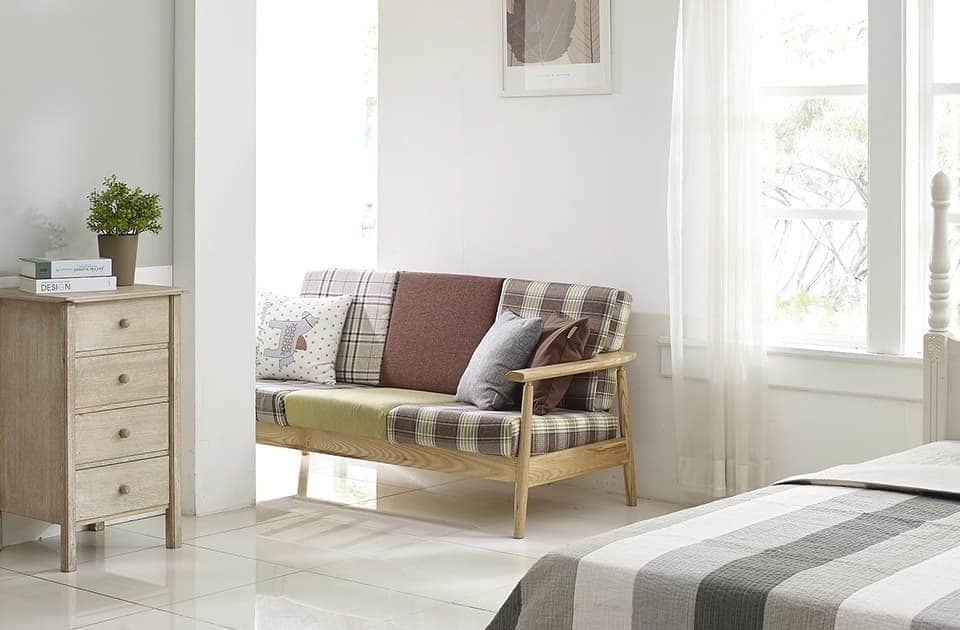6 Outstanding Kitchen Flooring Ideas

Seven Things to Consider When Planning an Office Layout
14th June 2019
How To Design A Commercial Bar: A Mini Guide
4th July 2019For many families, the kitchen is the heart of the entire home. It is where you prepare your favourite meals, entertain your guests and spend quality time as a family. When it comes to kitchen design, trends are constantly changing and adapting, and there are a huge number of design options to choose from. Kitchen flooring is often an area that is overlooked, but it can have a considerable impact on the overall look and feel of the room.
The kitchen is also prone to items being dropped and spilt, so a good kitchen floor should be long-lasting and durable. An interior design company will have plenty of kitchen design ideas for you to choose from, and the likes of Pinterest and Instagram can also give you some great inspiration. If you are looking to redesign your entire kitchen, or just spruce up your existing one with new flooring, then read on for our top kitchen flooring ideas.
Natural Stone Flooring
Natural stone covers a wide range of different materials, as it refers to various materials that are extracted from the earth and then processed into stone to be used in architecture projects, such as kitchen design. Stone flooring offers a huge choice in both pattern and colour and can be designed to suit almost any décor effortlessly.
Each different type of stone will have its own unique properties, and it is important to bear this in mind when choosing your kitchen flooring. Onyx and marble are both very soft and can be easily scratched and stained, making them a poor choice for a kitchen floor which needs to be very hardwearing. Granite and slate are both very hard materials which can also be sealed to protect them from water.
Ceramic Flooring

If you want the lovely look, feel and strength of a natural stone floor, while also being impervious to moisture penetration, then ceramic flooring could be the choice for you. An interior design company will love ceramic flooring because it looks great and can go with loads of different kitchen design options. Homeowners will love ceramic flooring because it is really easy to take care of and can be swept, vacuumed, and mopped without any issues.
Vinyl Flooring
This option is relatively new to flooring game and has only become popular in the last couple of decades. Vinyl is similar to plastic in the sense that it is human-made and has many of the same properties, such as being very resistant and resilient. It is an excellent option if you want a floor that won’t stain easily if things are spilt in the kitchen, and it is easy to clean as it can be wiped down.
Vinyl is generally an affordable kitchen flooring option, and it comes in a wide variety of colours, textures and styles so you can create any look and feel you desire.
Linoleum Flooring
For a super-low maintenance and easy to care for kitchen floor, linoleum is an excellent choice. It is very durable and resilient, as it is difficult to scratch, tear or stain, although the main downside is that is can be prone to curling in very humid or moist rooms.
It is manufactured from linseed oil, making it ecologically friendly, renewable, biodegradable and all-natural. When you choose to get rid of linoleum flooring, it can be recycled and used to power generators, meaning it has nearly no negative impact on the environment.
Brick Flooring
For a unique and shabby chic look in your kitchen, brick flooring can be used to complement various types of kitchen designs. It is a very hard surface material, making it quite durable, but you should bear in mind it is also permeable and does need to be sealed to protect it.
After sealing, brick flooring is very low-maintenance and will only need sweeping clean every few days. The bricks will require sealing periodically, as it can wear away, but as long as this is done regularly, then a brick floor can last many, many years.
Concrete Flooring
If you are aiming for a contemporary and modern look in your kitchen, then consider concrete flooring. Concrete is super powerful, durable and strong, making it a very easy kitchen floor option. It is very difficult to damage a concrete floor as it is nearly impossible to dent, scratch or chip it. If damage does somehow occur, it is very simple and easy to repair at little cost. The only real downside to a concrete kitchen floor is that it is permeable, and spillages can seep through if it hasn’t been properly sealed.




